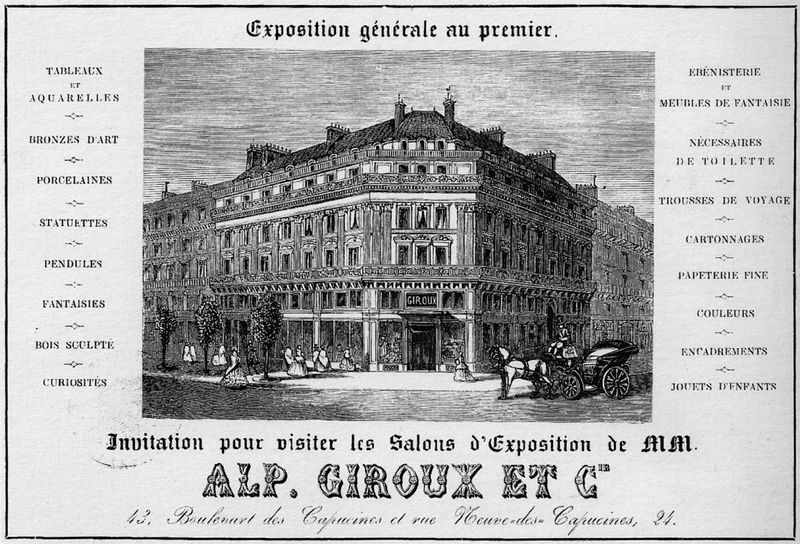An Ormolu, Brass, Ivory, Fruitwood and Marquetry Cachepot
Designed by Ferdinand Duvinage for Maison Giroux, circa 1880
Inscribed on the rim ALPH. GIROUX PARIS, the ivory stamped FD Bté
Inscribed on the rim ALPH. GIROUX PARIS, the ivory stamped FD Bté
10 ⅛ in (26 cm) high, 12 ⅝ in (32 cm) diameter
cf. Daniëlle Kisluk-Grosheid, 'Maison Giroux and its 'Oriental' Marquetry Technique', Furniture History: The Journal of the Furniture History Society, 1998, vol.34, p.147-172
cf. Daniëlle Kisluk-Grosheid, 'Maison Giroux and its 'Oriental' Marquetry Technique', Furniture History: The Journal of the Furniture History Society, 1998, vol.34, p.147-172
The Maison Giroux was founded in 1799 by François-Simon-Alphonse Giroux. In 1838 his two sons expanded the business under the name, Giroux et Cie. and were awarded numerous medals at the 'Exposition des produits de l'industrie française'. In 1855 the business was located at 43 boulevard des Capucines until it was taken over by Ferdinand Duvinage and A. Harinkouck in 1867. In 1874, Duvinage became sole proprietor of the business until his death in 1876 when his widow, Madame Rosalie, took over until 1882. It was she (known as 'veuve Duvinage') who filed a patent (Brevet d'Invention) on 4 June 1877 for 'une mosaique combinée avec cloisonnement métallique, pour objets artistiques et d'ameublement, par Madame Veuve Ferdinand Duvinage, à Paris'. The application included details of the manufacturing technique and a full-scale diagram of the ivory-ground marquetry. This patent was registered on 28 August 1877 thus confirming the beginning of this exquisite production of fine ivory and marquetry pieces. Objects with this new patented technique were first exhibited to great acclaim at the Paris Exposition Universelle in 1878. An anonymous contemporary accoun states, 'les ivoires cloisonnés de la maison Giroux, Duvinage F. Successeur de Alp. Giroux. Meubles de Luxe: fantaisie en ivoire cloisonné.'
Japanese-inspired pieces such as this cachepot are in important private and public collections: a magnificent cabinet-on-stand is in the Musée d'Orsay, an occasional table in the Art Institute of Chicago, a decorative panel in the Metropolitan Museum of Art, a tray in the Los Angeles County Museum of Art, a tazza in the Detroit Institute of Art, and other works in the Cleveland Museum of Art and the Musée des Arts Décoratifs in Paris.
Japanese-inspired pieces such as this cachepot are in important private and public collections: a magnificent cabinet-on-stand is in the Musée d'Orsay, an occasional table in the Art Institute of Chicago, a decorative panel in the Metropolitan Museum of Art, a tray in the Los Angeles County Museum of Art, a tazza in the Detroit Institute of Art, and other works in the Cleveland Museum of Art and the Musée des Arts Décoratifs in Paris.






















